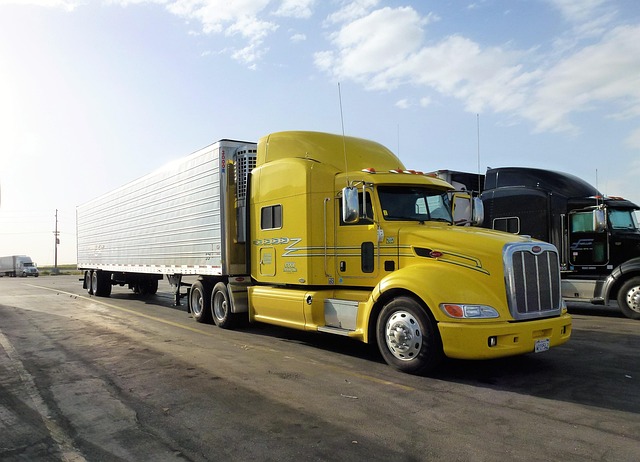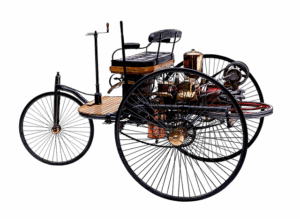Registering Your Car: Step-by-Step California DMV VIN Verification
Looking to register your car in California? This comprehensive guide breaks down the process step-by-step. From understanding key requirements to gathering essential documents, you’ll learn everything…….

Looking to register your car in California? This comprehensive guide breaks down the process step-by-step. From understanding key requirements to gathering essential documents, you’ll learn everything needed for a smooth registration experience. We highlight the importance of DMV VIN verification and walk you through paying fees and securing your plates. Streamline your car registration today with these expert tips!
- Understand California Car Registration Requirements
- Gather Necessary Documents for Vehicle Registration
- Visit Your Local DMV Office or Use Online Services
- Perform DMV VIN Verification Step-by-Step
- Pay Car Registration Fees and Receive Your Plate
Understand California Car Registration Requirements

Before registering your car in California, it’s crucial to understand the state’s specific requirements. The California Department of Motor Vehicles (DMV) mandates several steps for new and used vehicle registrations, including a thorough vin verification process. This involves checking the Vehicle Identification Number (VIN) to ensure the car’s history aligns with what the seller provides.
For out-of-state transfers or when dealing with private sales, a mobile vin inspection or verifications service might be beneficial. These services offer convenient and efficient vin checks, allowing for peace of mind before finalizing the registration process. By adhering to these guidelines and utilizing available resources like mobile vin verification, you can ensure a smooth car registration experience in California.
Gather Necessary Documents for Vehicle Registration

Before heading to the California Department of Motor Vehicles (DMV) to register your car, make sure you have all the required documents in order. The process begins with a thorough vin inspection. This involves verifying the vehicle identification number (VIN), which is a unique code that identifies your specific vehicle. You can facilitate this vin verification by using official tools or services, including mobile vin inspection apps, to ensure the VIN is legitimate and matches the details of your car.
Gathering these documents not only streamlines the registration process but also ensures accuracy. During your visit to the DMV, you’ll need proof of ownership, typically a title document; valid identification like a driver’s license or state ID card; current vehicle insurance policy; and the completed and signed registration application form. Additionally, for dmv vin verification, bring along any available service records or maintenance documents that highlight your car’s history.
Visit Your Local DMV Office or Use Online Services

Visiting your local DMV office or utilizing online services are both viable options to register a car in California. If you choose to go in-person, be prepared with essential documents like proof of identification, vehicle ownership transfer papers, and any relevant insurance information. The process involves submitting an Application for Title and Registration form, along with the necessary fees. During your visit, a DMV representative will guide you through the steps, ensuring all details are accurate.
For a more convenient approach, California’s DMV offers online registration services that include a crucial step: VIN (Vehicle Identification Number) verification. This can be done via a mobile vin inspection or by visiting a designated location for a physical vin inspection. Once your VIN is verified, you can complete the registration process online, saving time and effort.
Perform DMV VIN Verification Step-by-Step

Performing a DMV VIN (Vehicle Identification Number) verification is a crucial step when registering your car in California. Here’s how to do it step-by-step:
1. Gather Necessary Documents: Before heading to the DMV, ensure you have all required documents, including the vehicle’s title, registration papers, and proof of insurance. Your driver’s license and identification are also essential.
2. Locate Your Vehicle Information: You’ll need your car’s VIN, which is typically found on a plate located on the dashboard near the driver’s side door or under the hood. Some models might have it etched into the window. If you’re still unable to locate it, consider using a mobile vin inspection tool for quick and accurate verification.
3. Visit Your Local DMV Office: Go to your nearest California DMV office. You can usually schedule an appointment online beforehand to save time.
4. Complete Application Forms: Fill out the required forms, providing detailed information about your vehicle. This includes the make, model, year, and VIN. Double-check all details for accuracy.
5. Present Documentation: Submit all necessary documents, including proof of ownership, insurance, and identification.
6. Undergo VIN Verification: A DMV official will perform a vin inspection to confirm that your vehicle matches the information on file. This step is crucial to prevent fraud and ensure the safety of registered vehicles.
7. Pay Registration Fees: Once your VIN verification passes, you’ll be directed to the registration counter where you can pay the required fees. After processing, you’ll receive your new California registration plates.
Pay Car Registration Fees and Receive Your Plate

After completing your car’s registration application at the California DMV, it’s time to pay the registration fees. The cost varies depending on various factors such as the make and model of your vehicle, its age, and whether it’s a new or used car. You can typically pay online, by phone, or in person at a local DMV office. Once processed, you’ll receive your vehicle’s unique Identification Number (VIN) verification. This crucial step involves a thorough inspection to ensure the vehicle’s history is clear and matches the information provided.
As an alternative to traditional DMV visits, consider using a mobile VIN verification service. These services offer convenient, on-demand inspections where a professional will come to you. This option is particularly beneficial for folks with busy schedules or those who prefer a hassle-free experience. With the help of modern technology, these mobile vin verifiers ensure a swift and accurate process, allowing you to obtain your car plates without the usual wait times.
Registering a car in California involves understanding specific requirements, gathering essential documents, and completing necessary steps like a DMV VIN verification. By following these outlined procedures—from visiting the local DMV or using online services to paying registration fees—you can ensure your vehicle is legally registered and ready for California’s roads. Remember to keep all records up-to-date to avoid any future issues.







